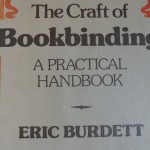Our new display, in the staircase hallway until the New Year, features a wide range of Huntley and Palmers Christmas biscuit packaging – from the weird to the wonderful. Drop by to see it next time you’re in!
Huntley & Palmers started life in 1822 as a small bakery in London Street, Reading. In 1846 the firm opened a large factory on Kings Road in Reading and by 1900 the business was the largest biscuit manufacturer in the world, employing over 5,000 people. The firm merged with other biscuit makers including Peek Frean to become Associated Biscuit Manufacturers Ltd in 1969. The Reading factory closed in 1972.
The archives cover the period 1837-1995. The collection consists of documentary materials from all areas of the business, including financial records, correspondence, sales records, promotional material and audiovisual items. The collection of tins dates from the 1880s and includes some particularly fine examples.
The three exhibition cases contain collages of colour photocopies of original Christmas scraps printed by the company and given away as promotional material. You will see that some of the images are not typical of what to our eyes represent Christmas, for example the children with eggs, the bouquets of spring flowers and the wonderful card of the mouse astride a lobster! All this material came from the Christmas seasons of 1892 and 1893.
The upright glass exhibition case contains a selection of original tins, the earliest of which date from the 1880s, which are part of the Huntley & Palmers collection. The case also contains some replica tins made by Morryce Maddams using photocopies of the original packaging.
If you’re in the Christmas spirit, our Victorian Christmas Tour takes place on Sunday 8 December, 2.30-4pm (£3 per child). Our staff will be ready to welcome you into Christmas in 1882, where the Palmer family are spending their first Christmas at their new home, Easthorpe house. Meet Lord and Lady Palmer, their Butler Jerrome, Housekeeper Mrs Gough and other members of the household staff, and learn about Victorian Christmas traditions, play Victorian party games, enjoy seasonal refreshments and make their own Victorian Christmas card. To book a place, see our Events page.





















